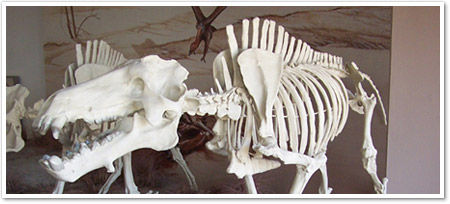Agate Fossil Beds and its surrounding prairie are preserved in a 3,000 acre national monument. Once part of “Captain” James H. Cook’s Agate Springs Ranch, the nearby beds are an important source for 19.2 million year-old Miocene epoch mammal fossils. Cook’s ranch also became a gathering place for Chief Red Cloud and other Oglala Lakota (Sioux) Indian people. The monument’s Cook Collection of American Indian artifacts reflects years of gifts brought by the Indians during visits to the ranch from the 1880′s through the early 1900′s.
Did you know…
Agate Fossil Beds National Monument also tells the story of “Captain” James Cook–a former professional hunter, guide and Army scout, and owner of Agate Springs Ranch. For 50 years, the Agate Springs Ranch was a haven for Indian visitors, such as Red Cloud. Cook welcomed and fed his guests, and the Indians gave Cook presents. In time, these gifts became a sizable and important collection of Native American artifacts.
Nineteen million years ago, creatures long extinct roamed across a Miocene savanna long disappeared. Today, we find their fossilized remains in the sedimentary hills of Agate Fossil Beds National Monument–a truly fascinating paleontological adventure.
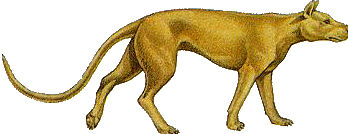 |
Daphoenodon was carnivorous. It differed from the earliest true dogs of the Oligocene Epoch. Its so-called “beardog” family eventually went extinct. |
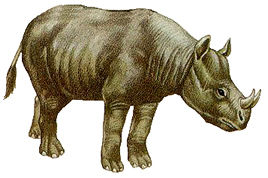 |
Rhinos were varied and abundant during most of the Cenozoic Era. Around the world they ranged in size from the three-foot tall North American species Menoceras (shown here) to a giant Asian species, the larget land mammal yet found in the fossil record. |
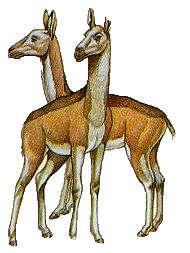 |
The tiny gazelle-camel Stenomylus probably grazed in herds for protection from predators. |
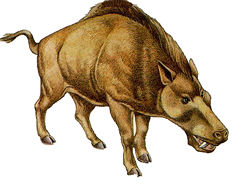 |
Daeodon (formerly called Dinohyus, “terrible hog”) had bone-crushing teeth enabling it to scavenge the remains of other grassland animals. |
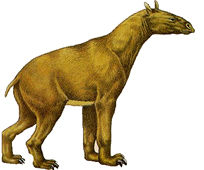 |
Moropus was a distant relative of the horse and one of the more puzzling mammals. For many years paleontologists thought its feet had claws rather than hooves. |
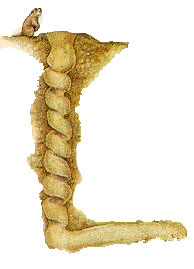 |
Lacking other defenses, some larger rodents, such as the dry-land beaver Palaeocastor, lived in colonies beneath the High Plains of North America. Their burrows remain as trace fossils today. |
